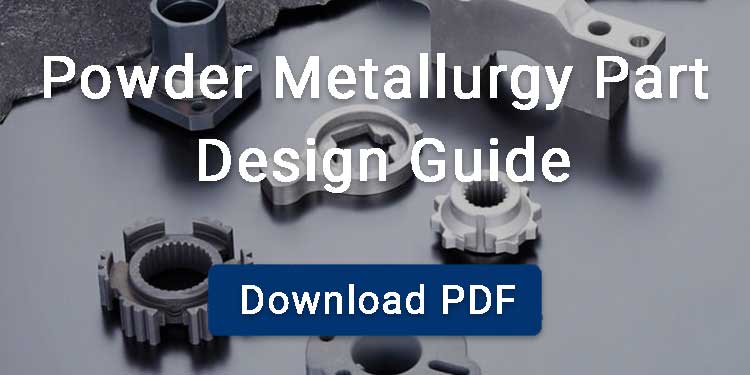Iron-based powder metal parts have a wide range of applications, such as automotive engines, gearboxes, motorcycles, household appliances, power tools. However, these parts usually have low hardness, limited corrosion resistance, and poor airtightness due to the presence of tiny pores in the matrix structure.
Steam treatment, also known as steam blackening, is a simple and cost-effective way to enhance the mechanical properties of your iron-based powder metallurgy products, improving their durability and overall performance.
Contents
What is Steam Treatment in Powder Metallurgy?
Steam treatment is a surface treatment process used for iron-based powder metallurgy parts, where the parts are exposed to superheated and supersaturated water vapor. This causes a dense, hard layer of magnetite (Fe₃O₄) to form on the surface and within the interconnected pores. The oxide layer bonds tightly to the metal base, improving hardness, corrosion resistance, wear resistance, and sealing performance.
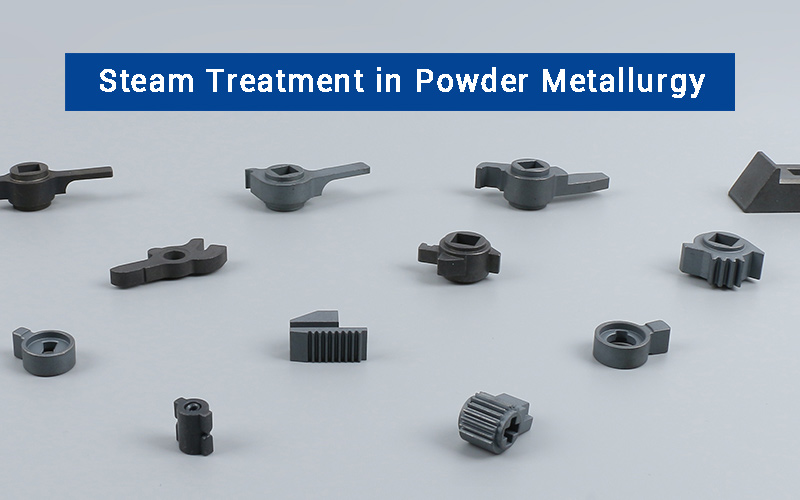
Steam Treatment Process
Steam treatment is a secondary operation performed after sintering process to enhance certain functional properties of a part. These may include improved dimensional tolerance, corrosion resistance, or surface appearance.
- First, the iron sintered parts are cleaned to remove any oil and surface contaminants, and then placed into the steam treatment furnace.
- Nitrogen is introduced to purge the air from the chamber.
- Once the furnace temperature rises above 100 °C, water vapor is introduced.
- The temperature is then increased to between 500 and 570 °C and held for 1 to 2 hours to allow the oxide layer to form.
- Afterward, the furnace is cooled to below 300 °C. Nitrogen is reintroduced to purge residual water vapor and hydrogen, and the treated parts are then removed.
When the temperature is 500-570℃, magnetite forms according to the reaction:
3Fe + 4H₂O → Fe₃O₄ + 4H₂
When the temperature exceeds 570 °C, iron can react with water to form iron oxide and hydrogen:
4Fe + 3H₂O → 2Fe₂O₃ + 3H₂
3FeO + H₂O → Fe₃O₄ + H₂
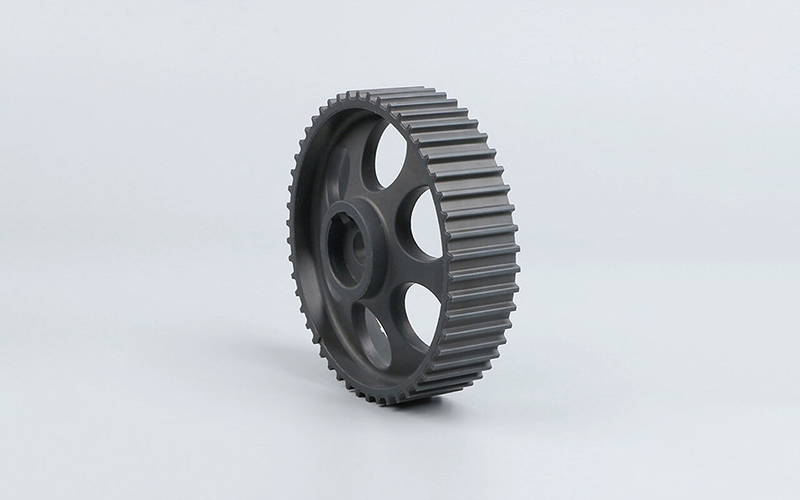
Advantages of Steam Treatment
Improved corrosion resistance
Steam treatment produces a dense and stable protective layer of ferroferric oxide, which can effectively protect iron-based sintered parts from corrosion by water, oxygen or other chemicals.
Better Airtightness
During the steam blackening process, water vapor enters the open pores of the sintered part and also forms an oxide film inside the pore wall, thereby blocking the micropores and reducing gas or liquid leakage.
Enhanced Strength
Through blackening process, the internal pores of the sintered parts are filled, so the compressive strength is also improved.
Improved Hardness
The iron oxide generated by steam treatment has a high hardness, which improves the hardness of iron-based powder metallurgy parts and can reach 90 HRB.
Good Aesthetics
After blackening, powder metallurgy iron-based parts can have a uniform blue-black appearance, which improves the aesthetics.
Cost-Effective
Compared with electroplating, heat treatment and other processes, steam blackening equipment is simple, low in energy consumption, and free of heavy metal pollution.
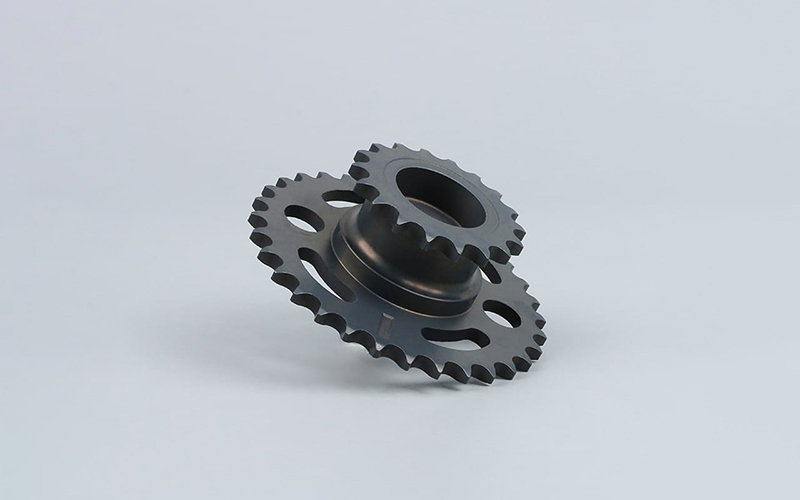
Typical Applications of Steam Treatment
Refrigerator Compressor Parts
Steam treatment significantly improves part airtightness, which is especially valuable for parts like refrigerator compressor valve plates, connecting rods, and pistons, which work under pressure and demand reliable sealing.
Shock Absorbers Components
Steam blackening improves the surface of sintered shock absorber parts by increasing hardness, sealing micro-pores, and boosting resistance to wear and corrosion. This results in more durable pistons that perform reliably in demanding conditions.
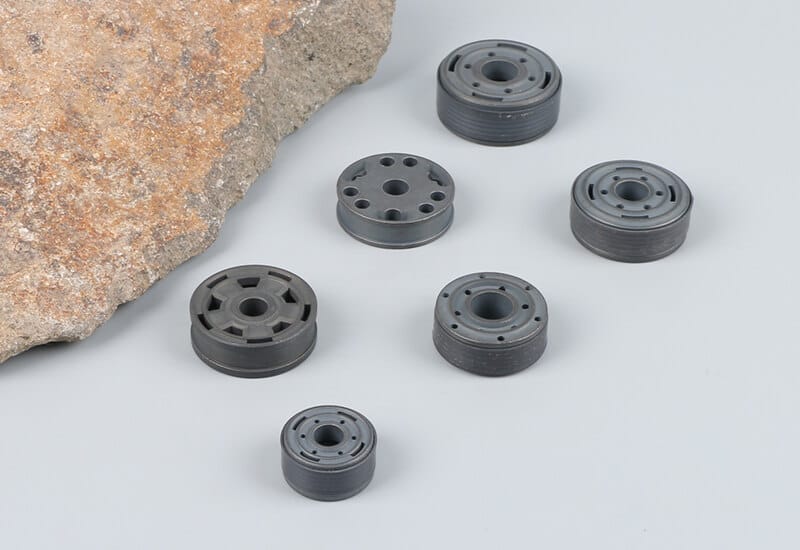
Engine Parts
The oxide layer formed during steam treatment protects sintered engine components from rust in high-temperature, high-humidity environments and reduces wear caused by continuous motion. Typical applications include timing pulley, camshaft gears, water pump pulleys, and VVT sprockets.
Door Lock Components
Steam treatment enhances the durability of sintered lock parts such as cams, latches, pins, and housings by improving surface hardness, corrosion resistance, and wear resistance, ensuring long-term performance in harsh environments.
BLUE is a leading powder metallurgy companty in China, offering a wide range of standard parts with no tooling fees. Visit our SHOP page to browse and order parts that match your specifications. Can’t find what you need? We also provide custom powder metallurgy parts.
FAQ
Why do Some Steam Treated Iron-based Sintered Parts Show Red Spots?
When you look at an iron-based part, the surface may appear red, and sometimes large flakes may appear that flake off easily. This is because Fe₂O₃ (red iron oxide) is produced. This usually happens when the furnace hydrogen concentration is too low and the temperature exceeds 400°C, causing the Fe₃O₄ to oxidize further to Fe₂O₃.
To prevent this, you should make sure the steam furnace has good gas flow, the reaction produces enough hydrogen, and a reducing atmosphere is maintained to stabilize Fe₃O₄ formation on the part.
Why do Some Steam Treated Powder Metal Parts have Grayish-white Patches on the Surface?
This is usually caused by cutting fluid or oil residue on the surface of the sintered part before steam treatment. These residues form a film that prevents steam from reacting with the iron surface, thereby hindering the formation of Fe₃O₄. To prevent this, you should properly clean, shot blast, or preheat the part to around 380 °C before steam treatment to remove surface contaminants.
Why do Steam-treated Oarts Develop Microcracks and Become Brittle?
This is caused by excessive formation of Fe₃O₄, which is hard but brittle. Low-density powder metallurgy parts oxidize quickly during steam treatment, increasing hardness but reducing strength. To avoid brittleness, shorten the steam treatment time—reduce it by 5–15 minutes for thin-walled parts, and adjust accordingly for thicker ones.



